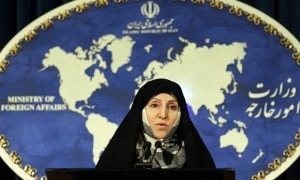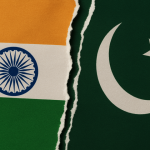The recent cover of Time magazine featuring the photo of Aisha has sparked debate about the US presence in Afghanistan and what it means for women’s rights there. Here at MMW, the overwhelming sentiment seems to be that the image is yellow journalism at its finest, reinforcing the antiquated rhetoric of “saving women” and exploiting Afghan women by intimating that US occupation has kept Afghan women safe.
Riz Khan of Al Jazeera seems to be cognizant of the sensationalistic effects of the image. In a recent episode of his self-titled show, he addresses “Women’s Rights in Afghanistan.” Khan discusses the Time image as well as whether the foreign military presence in Afghanistan is helping or hurting Afghan women.
Viewers are introduced to Khan’s two guests: Wazhma Frogh and Gayle Lemmon. Wazhma Frogh is an Afghan activist who received the U.S. State Department’s 2009 International Woman of Courage Award for her work on human rights in Afghanistan.
Also there to weigh in was American author Gayle Lemmon, who has written a book on Afghanistan titled: The Dressmaker of Khair Khana, which tells the story of an Afghan girl whose business created jobs for more than 100 women in Kabul during the Taliban years.
The first half of the show discusses the Time cover image as Riz Khan poses the question of whether the picture hurts the image of Afghan women. Frogh believes that
“By showing images as such we actually detach the social realities that deteriorate the situation of Afghan women on the ground; we actually remove the situation of Afghan woman from a social perspective [and] from a governance perspective. The more accountability is fading from Afghanistan, the more we see that such acts are happening so I don’t know how much it can help. It might help one person to get her out of Afghanistan, but what happens to the hundreds of Afghan women who go through the same or worse situation on a daily basis.”
Then, the much debated question of whether U.S. military occupation is helping or hurting Afghan women is posed. Lemmon expresses the idea that the American public must come to terms with the fact that there is a pressing need for U.S. presence in Afghanistan as a means for our security. She reminds viewers that it was not the plight of Afghan women that lead to the invasion but, it was instead, the result of 9/11.
However, I recall that this wasn’t the requiem trumpeted by Laura Bush shortly after the occupation, when she began spouting Western Feminist rhetoric, lamenting the forced wearing of burqas and the prohibition of nail polish by the Taliban.
In fact, a few months after the invasion, in his 2002 State of the Union address, Bush announced, “The last time we met in this chamber, the mothers and daughters of Afghanistan were captives in their own homes, forbidden from working or going to school. Today women are free and are part of Afghanistan’s new government.”
Maybe the warmongering seemed justified and continued military presence seems justified if people believe that women are being rescued from oppression because of it?
In Lemmon’s opinion, troops cannot bring Afghan women equality, but U.S. presence creates a safe space where women can begin to help themselves? I guess she missed the recent news of U.S. soldiers digging bullets out of women’s bodies and then stabbing them to cover up civilian deaths as a result of an American Special Operations assault gone bad.
Frogh, in contrast, says that the presence of international troops is helping the stability of the country to some extent, but it does not translate into women’s rights being improved. She says that tying the U.S. military presence in Afghanistan to the state of women in Afghanistan is a big mistake. For her, it is not as easy as posing women’s rights vs. foreign presence. This rhetoric, which has framed the debate on Afghan women, needs to be deconstructed.
Frogh also notes that we must distinguish between rural and urban areas with respect to how women are treated. The achievements and progression made in the past nine years of occupation are focused mainly on urban women, who are easily reached and helped. While, women in the rural areas are not getting education, literacy rates are plummeting and their situation is worsening, as they continue to be subject to a masculine interpretation of religion.
One thing that Riz Khan’s program brought to light is that the damage done to women’s rights is not just a result of Taliban rule nor is it just a result of occupation. The problems have preceded both the Taliban’s rule and U.S. occupation and thus cannot be expected to be solved in just nine years of occupation. What is clear is that neither the Taliban’s supposed “religious” rule, nor the occupational force’s supposed “saving” tactics have provided both rural and urban Afghan women with the stability and infrastructure necessary to improve their situation.











